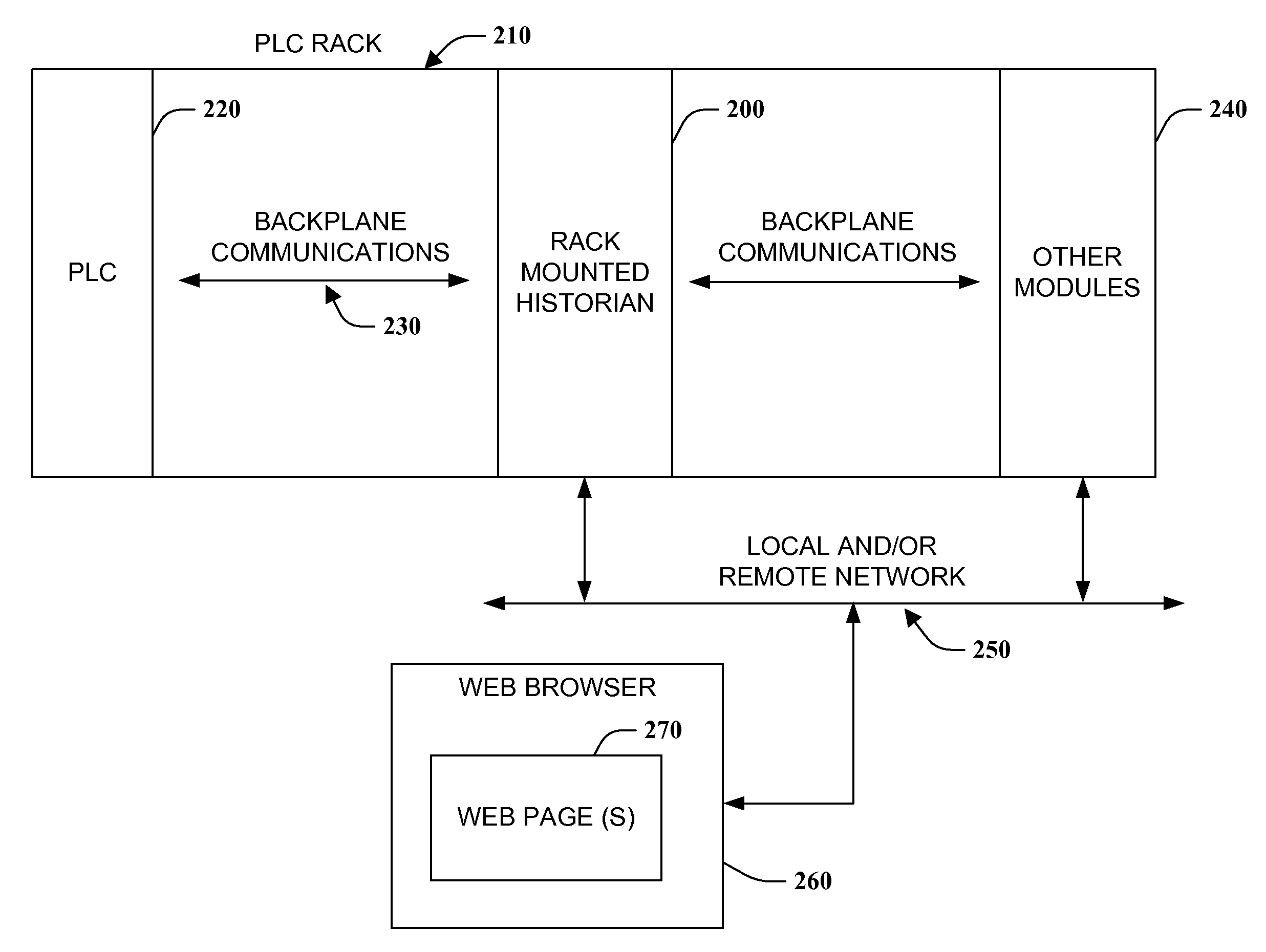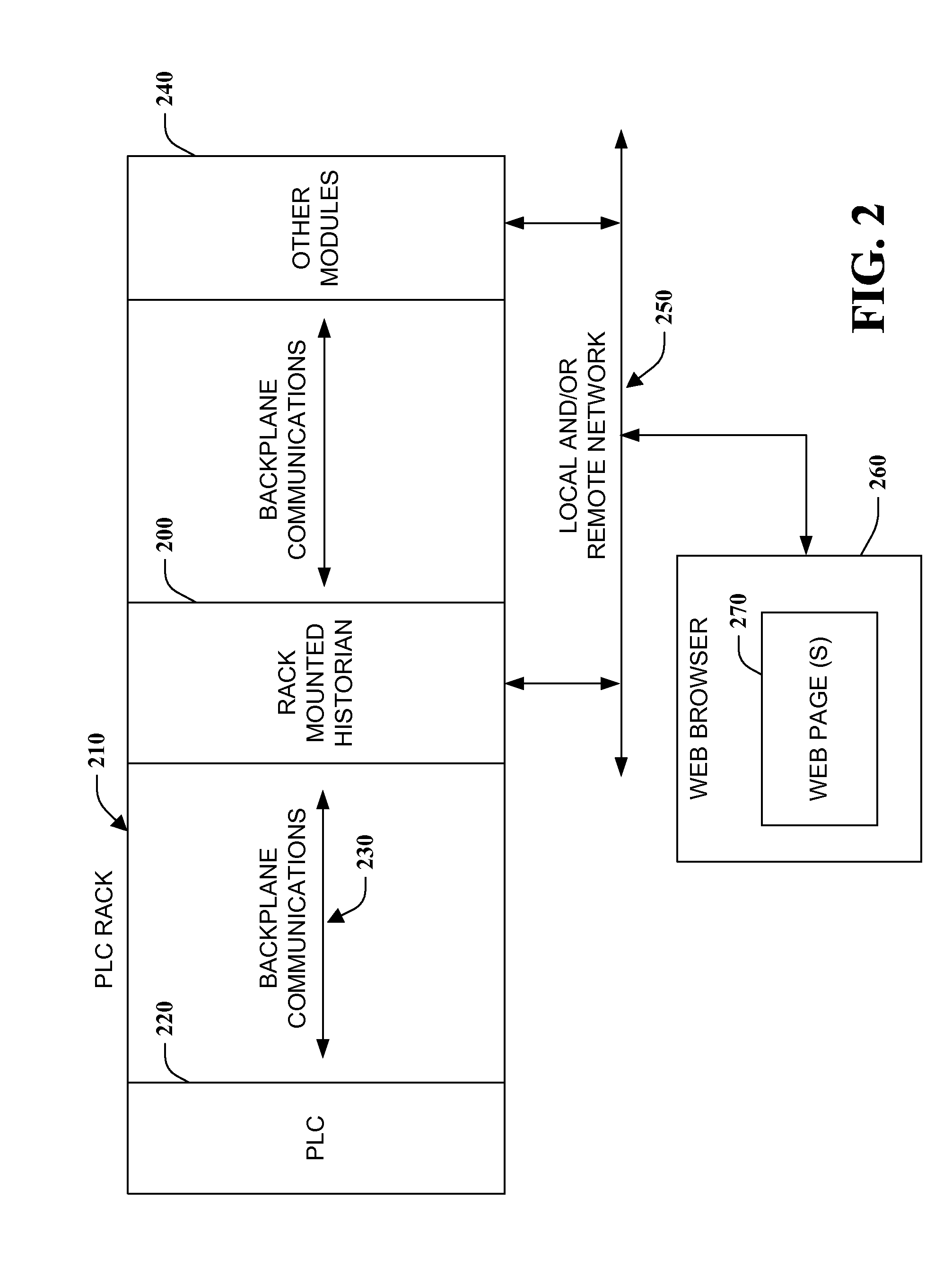Historian module for use in an industrial automation controller
a controller and history technology, applied in the field of industrial control systems, can solve the problems of inability to seamlessly exchange data between the various components of the enterprise, and insufficient data collection and storage solutions of existing data collection and storage solutions, so as to facilitate data collection and save system bandwidth , the effect of efficient integration
- Summary
- Abstract
- Description
- Claims
- Application Information
AI Technical Summary
Benefits of technology
Problems solved by technology
Method used
Image
Examples
Embodiment Construction
[0032]A distributed historian framework is provided where historical data is collected in accordance with an organizational model of a hierarchical system that is distributed across various elements of an enterprise. The model allows data identified for historian purposes to be automatically collected and also allows historian functionality to be exposed and thus efficiently integrated with other elements of an organization. Such elements include representations of the system that are maintained on higher-level business servers and other representations that serve control elements of the system such as programmable logic controllers and / or other industrial control components (e.g., sensors, modules, and so forth). A directory service operates with the organizational model to enable configuration of historian components within the organization and to enable data to be located within the organization. Common organization functionality such as security services can be distributed to th...
PUM
 Login to View More
Login to View More Abstract
Description
Claims
Application Information
 Login to View More
Login to View More - R&D
- Intellectual Property
- Life Sciences
- Materials
- Tech Scout
- Unparalleled Data Quality
- Higher Quality Content
- 60% Fewer Hallucinations
Browse by: Latest US Patents, China's latest patents, Technical Efficacy Thesaurus, Application Domain, Technology Topic, Popular Technical Reports.
© 2025 PatSnap. All rights reserved.Legal|Privacy policy|Modern Slavery Act Transparency Statement|Sitemap|About US| Contact US: help@patsnap.com



